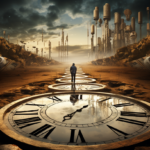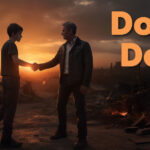 Quick Screenwriting Tip:
Quick Screenwriting Tip:
As you race toward your thrilling conclusion, be mindful of your scene lengths, especially if you need to cut across multiple locations, with multiple characters.
Longer scenes will slow things down. Shorter scenes will speed things up.
Sometimes you may have some important business to take care of, in one location, that will take many pages to complete. If you can’t trim it, but want to make sure you don’t lose momentum or intensity, look for an opportunity to cut the scene into two or more parts. You can then jump back and forth between locations, and maintain the pace.
Just make sure you end each scene with a “button”1 so the audience looks forward to coming back to the action.
Want me to read your screenplay? Please take a look at my script services.
- Ending on a button means your scene or dialogue ends with a powerful moment; a hook, joke, cliffhanger, reveal, zinger, shocker, etc. ↩





Trevor,
Yes, we race to finish and be concise. But when the brain does not want to downsize the scenes, what do you do? Lots of screenwriters think they can control their brain and write logically. So what should I do when my brain is not behaving and going into its own world?
Are you saying that most writers have 100% control of their brain and write like a computer programmer?
Hey Screenwriter Invisible,
I was referring to your story racing to its conclusion — not the writer. But I can definitely see how that statement was ambiguous. You’re right — unless you have an innate intuition about such things as you go, scene lengths are something that you will most likely fix during the rewrite. And that’s just fine.
If you’re in the zone while writing, absolutely plow through. It can be dangerous to engage that inner computer programmer while you’re in creativity mode! But once your first draft is finished, pay close attention to scene lengths — especially if you’re building to a thrilling climax.
Thanks for the note!